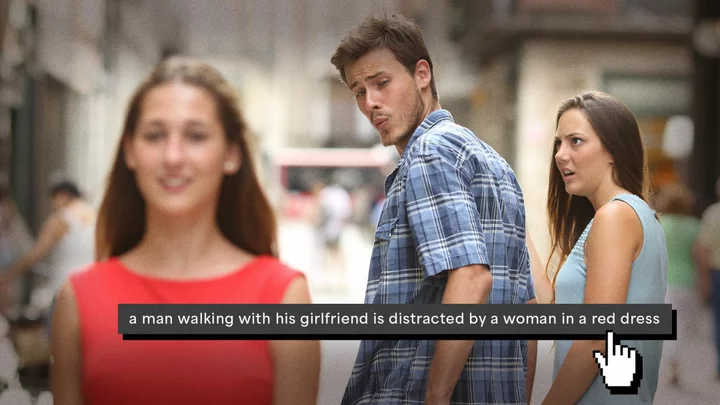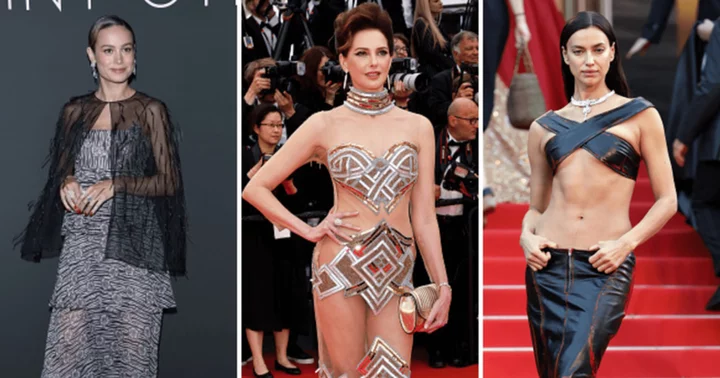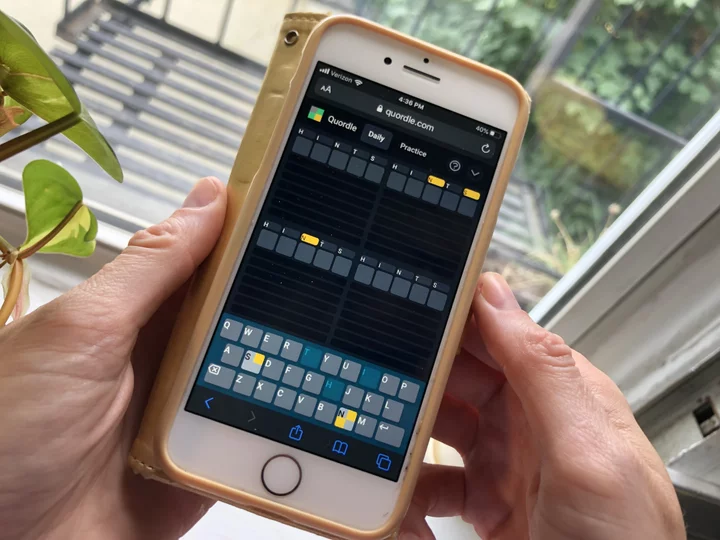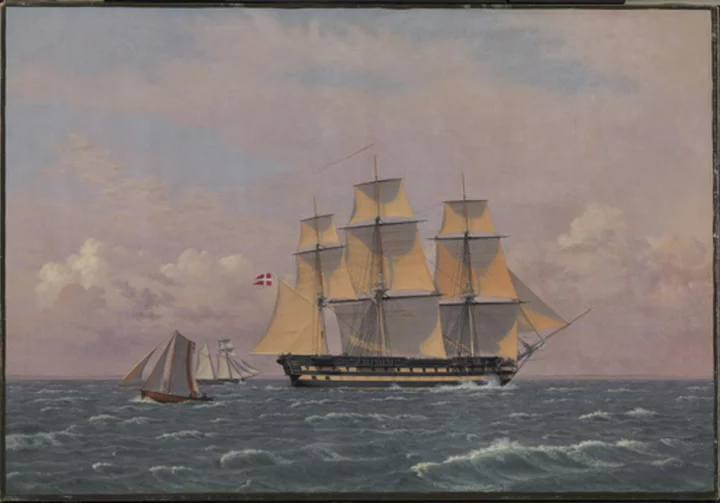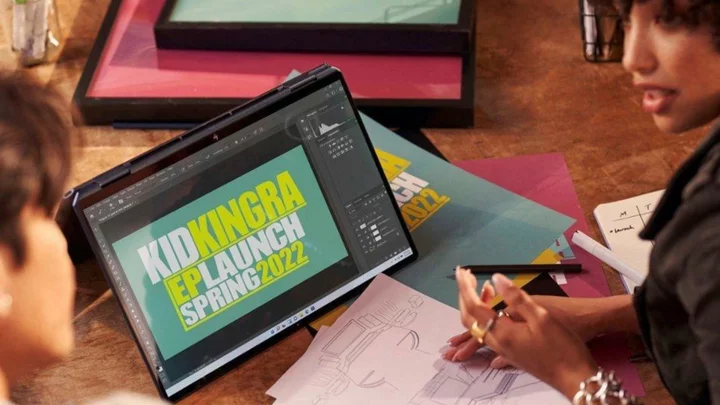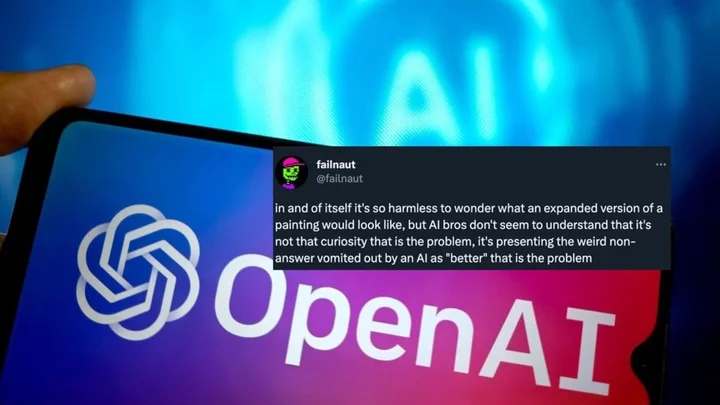The meme economy rarely falters, and as the impetus for much of our social posting, memes have become the common vernacular and social currency of generations of users.
But a huge portion of those digital consumers are frequently left out of the loop, the product of failed website accessibility, user error, or even misinformation. Meme inaccessibility isn't simply a technological or communicative gap: "Barriers to participating in meme culture can also directly affect social lives," TIME reported in a 2020 story with researchers from Carnegie Mellon University.
That's where informative and accessible alternative text (alt text) comes in.
SEE ALSO: The best memes of 2023 (so far)Veronica Lewis is an assistive technology advocate and writer of accessibility blog "Veroniiiica" ("Veronica with Four Eyes"). Lewis — who identifies as someone with low vision, and uses a cane and other assistive technology in her everyday life — published a frequently cited guide on writing alt text for our collective online humor back in 2018, and has since kept her highly-informative How-To updated for all.
Lewis' guide includes a crash course on alt text, a guide to meme-based considerations, and plenty of helpful examples. As she writes, "Accessible memes are my favorite memes."
Accessible memes make the internet a fun place for all, but the practice is helpful in a variety of ways. 3Play Media, a captioning and video accessibility company, notes that adding alt text to your memes is a beneficial practice for companies and creators, too. "Alt text allows bots to 'read' and better understand the content, similar to how they read closed captions on video content," the company explains. "This means your content can be better recommended to viewers, gain more exposure, and ultimately lead to increased site traffic."
Here's how to get started making your jokes available for all, whether you're a meme connoisseur or a brand cashing in on a trendy bit.
The basics of alt text
Alt text has evolved into an increasingly visible practice for users, not just web developers, and the presence of alt text (and its customizability) is often used as an indicator of a site's commitment to accessibility basics.
Much of that work happens behind the scenes, but, on social platforms, users might spot accessible posts with added text walls prefaced with the phrase "ID" or "ALT," common acronyms for two types of descriptive elements: image descriptions and alt text.
While there are technical differences between alt text and image descriptions, the two have come to be used interchangeably by many. Image descriptions have front-end purposes, commonly displayed in a post's caption. Alt text is added to an image or site's metadata, and generally is only readable to screen readers or other assistive technology, not users directly. Because of this, image descriptions tend to be much longer and more descriptive.
However, as social media sites have leaned more into accessible web design (and been persuaded by advocates to add more user-friendly, simplified tools and features to their sites), these distinctions have become blurred. On platforms like X (Twitter), user-generated alt text presents as an image description, accessible to both screen readers and unassisted users.
Many accessibility advocates recommend using both alt text and image descriptions when making or posting digital content.
Be descriptive, but concise.
The standard guidance for alt text is to cut down on excessive words as much as possible. Not only is it practical in a technical sense, but it also helps cut down on the mental load of users who use assistive technologies.
Alt text should be clear and convey any necessary information, but does not need to be an excessively long paragraph.
Avoid extra phrases.
Additional phrases like "an image of" are generally unnecessary (the screen reader already knows it's a photograph or other element). Use phrases like these only if they provide context to understanding the image, such as a labeled chart, bar graph, or unique visual style.
Summarize the purpose.
Alt text should convey the meaning or intent of the image just as much as it describes the actual elements represented. In essence, alt text is focused on purpose, rather than aesthetics.
An image description tacked onto a photo caption or in the reply to a social post may be the more appropriate place to include a highly-detailed description of its visual media.
SEE ALSO: A guide to writing alt text and accessible image captionsFor your meme consideration
While broad alt text guidance is applicable to all visual media posted online, memes often hold more layered meaning and cultural context than other kinds of posts. They're also frequently the main source of entertainment on social platforms, vital to many users' online experience, and thus a critical part of making digital spaces as accessible to all as possible.
Technical limitations also explain why image-based memes might need a bit more description than adding alt text to a standard image.
As Lewis writes in her guide, most screen readers are used to reading a variety of text, links, menus, pictures and graphs (with alt text), emoji, and other keyboard inputs. Screen readers can't read images and graphs without added alt text, videos, or any text included in those images or videos. Simply put, they can't pull out letters and words from your images. And if it can't be read, it'll just be skipped over by the assistive tech.
Customizable alt text boxes that are visible to all users are designed to make the onsite experience of users with disabilities easier and to normalize the practice of adding alt text among the general public. They shouldn't be used to add non-accessibility-related information or to make a joke or meme itself, as it can add confusion to the online experience of users with disabilities.
Describe any and all text in the image.
Lewis explains that when a meme includes descriptions, dialogue, captions, or other text within the image itself, all of it should be described in its alt text. These words are often the crux of understanding the meme, so make it clear what it says and the location of the text on the image if relevant.
If the font or style of the text is also important to getting the joke, then include a brief description of that as well.
Note the subjects and any editing done to the photo.
For the most part, the images in these memes can be described in the same "informative, but concise" manner as regular alt text, but be sure to make it clear if the images have been altered in any extreme way for comedic purposes.
For example, the genre of "deep-fried memes" relies on extremely edited and filtered images that often have an ironic or absurd note. Include a brief description of this style and any overlays to the image.
Be sure to describe what the subject is doing as well, as many memes rely on visual cues of the subjects themselves to get their punchline across.
Want more Social Good and Accessibility stories in your inbox? Sign up for Mashable's Top Stories newsletter today.
Adjust your alt text depending on the type of meme.
Lewis also provides specific guidance for different types of meme posting.
For memes like simple reaction images — usually out-of-context photos of a celebrity or a still image from a popular video — be sure to note who is in the image if they are well-known, what the subject is doing, and any descriptive words that convey the purpose of the reaction photo.
Example: Taylor Swift listening to an iPod while sitting on a park bench with her chin resting in her hand.
When writing alt text for memes that are based on screenshots of text or posts from other websites, such as an old tweet, a Tumblr post, or a screenshot of a TikTok comment, just write out the text as seen in the image. Note if the post includes more than one user in conversation, and attribute the quotes accordingly.
Memes that include text labels on top of various objects within a single image should include descriptions of each object, their labels, and the context of the image. A popular example of this type of meme uses a stock photo depicting a man turning to look at a woman while his companion looks at him, aghast.
Example: A man labeled "me when i'm hungry" turns his back on his girlfriend labeled "a nutritious meal" to stare flirtatiously at a different woman labeled "an entire bag of chips."
Photos that include collaged elements that only make sense in the context of the meme or post should be described in full. Lewis provides the example of "niche memes," in which a user will make a single image filled with photos of various objects under a single title. Other meme formats like "starter packs" and "the zodiac signs as __" might fall into this category, too.
When writing alt text for them, the user should begin with the title, caption, or explanation first, then describe each of the images represented in the collage. Include any additional text added on top of the images with their descriptions or alongside the meme's title.
Example: A working from home starter pack. It includes working in your pajamas, shaking a computer mouse to keep a session active, scrolling TikTok, online shopping, and existential dread. Pictures include a pair of PJ pants, a computer mouse, the TikTok and Amazon logos, and a person staring into a mirror.
Don't be afraid to spoil the joke.
If the meme is more abstract or convoluted — or maybe relies on a deep understanding of internet lore — Lewis and other advocates say it's more than OK to explain the punchline in the alt text or image description.
What about GIFs?
Social media interactions, and a host of memes, often include video elements, specifically GIFs. While most of the above advice applies to these moving images, Lewis describes a few additional considerations one should make, including:
The appearance of people or animals as it relates to the emotion or purpose of the GIF. Don't include unnecessary descriptions of clothes or physical attributes unless they can help users understand the GIF.
The movement of subjects or the camera, including zooming in, speeding up, or slowing down.
The name of the television show or movie, as well as the character's name, if from popular media.
Lewis also says to consider adding a trigger warning in the post or image description for GIFs that include flashing lights or other strobing elements.
If the platform doesn't allow customizable alt text for GIFs, consider including an image description in a reply or the post itself.
Content accessibility companies and web developers sometimes advise against GIFs altogether, recommending regular videos or alternative, single-frame styles like comic strips.
Learn more about adding alt text and image descriptions across social media platforms.

